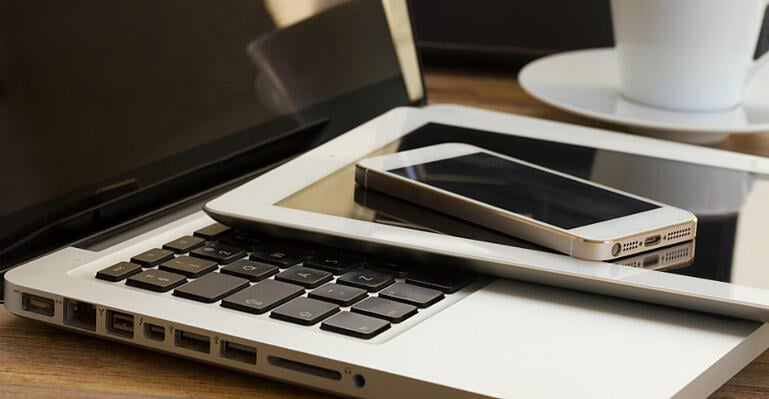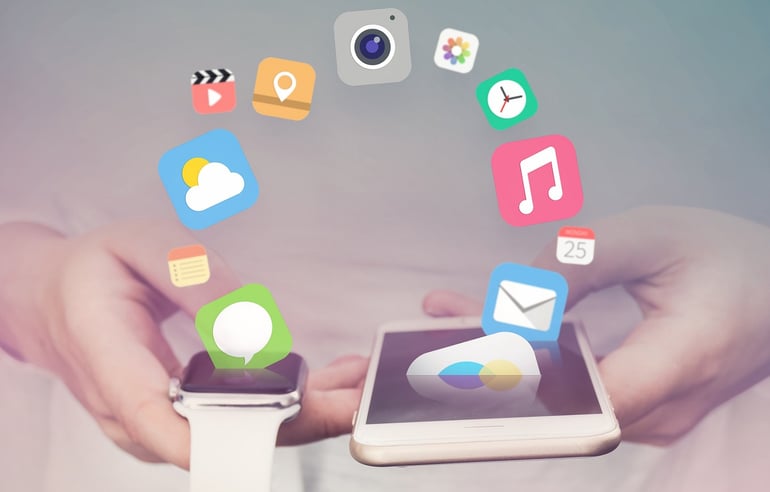The option to bring your own personal device to work is very convenient. You have access to your own comforts, don’t have to learn a new system, and you are able to choose what it is that you want to utilize. However, your company will still need to protect sensitive data. Here are a few examples of ways a company is able to allow their employees to use their own devices while still maintaining high levels of security.
Bring Your Own Device
New research indicates the average amount of devices the average person carries could reach 4.3 per person by 2020, and those devices are more powerful than ever. Think about it: what do you have with you right now? A smartphone, tablet, laptop? What about a smartwatch? With today’s increasing technology, they are all becoming much more relevant: we can often do just as much on a smartphone as we can on a laptop. The data each device can store is also significant, and often times very sensitive – things like financials, customer contact information, and trade secrets.
When considering a BYOD policy, the first question every enterprise must ask is: “How do we want to manage the user-owned devices connecting to our resources?” The answer to this question is critical in deciding which way to lean towards. Each level of involvement in managing user-owned devices has its own benefits and consequences.

Mobile Device Management
The most common form of BYOD management to date is Mobile Device Management (MDM). MDM is the administration of mobile devices, such as dealing with deploying, securing, monitoring, integrating, and managing those mobile devices in the workplace. It is considered a feasible method to both deliver applications to user-owned devices and secure the corporate apps and data on them.
MDM is designed as a way to ensure employees stay productive while at the same time preventing them from violating corporate policies. MDM implementations may be either on-premises or cloud-based.
A few of the things that an MDM primarily deals with:
- Corporate data segregation
- Securing emails and corporate documents on devices
- Enforcing corporate policies
- Integrating and managing mobile devices, such as laptops and smartphones
MDM also provides the ability to push applications to managed devices and allow enterprises to better enforce security controls. However, fully managing user-owned devices can result in something as drastic as doing a complete lockdown or wipe of their device if it is lost or stolen, which can include the user’s own personal content. When faced with these realities, users often become frustrated or disappointed. This can result in additional headaches for IT as users instead opt for skirting past IT policies to secretly connect to corporate resources.

Mobile Application Management
Mobile Application Management, in contrast to MDM, enables enterprises to avoid device-level management. Instead, it offers application-level management on user-owned devices. As a result, MAM completely negates the concerns that are associated with fully managing user-owned devices.
Water cooler chatter 15 years ago used to be about what happened on Seinfeld. Now it's ‘Look at what I’m doing on the enterprise network with my mobile device."
Bob Egan, Vice President of Mobile Strategy at Mobiquity
MAM is designed to give IT the ability to manage and secure only those apps that are designed to work with that particular application. As referenced with MDM, IT is capable of wiping or locking an employee's phone. With MAM, however, they could simply lock the user out of their corporate e-mail without the user worrying about his personal data becoming inaccessible. In fact, the company wouldn't even be aware or able to view those files.
IT is also able to limit the sharing of corporate data among different apps. There are some pitfalls with MAM, however. For example, as each app requires its own coding to work with each individual MAM product, the availability of apps for a specific platform can be limited.
Does your business need help moving forward into the future? V-Soft Consulting’s Business Solutions team is ready to help you with all of your mobile app development needs. You can get a free, no-strings-attached consultation to see if we fit your needs.Simply contact us for more information. We’ll be glad to help.















